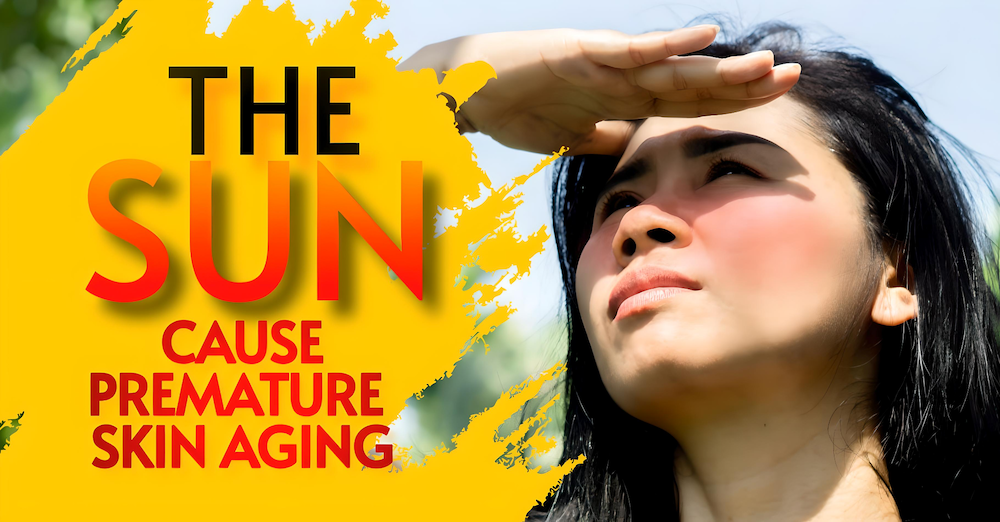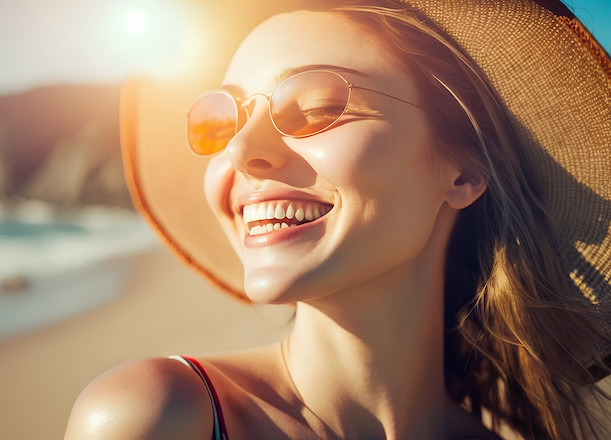
My friend Florencia has always been unique. While most people love to tan, Florencia hates it. She avoids going outside as much as possible during the day, and always wears sunscreen and a giant hat. Florence has the most beautiful hair I’ve ever seen: long, dark, and silky. She is also susceptible to the sun, which can quickly turn her mane into a dry, brittle mess. Florence uses daily shampoos, conditioners, and unique treatments to look like a runway model. I’ve tried to persuade her to give more of herself to the sun, let her hair down, and enjoy the warm embrace of her skin. But, the fear of damaging her hair is too intense.
The truth is that UV radiation from the sun bleaches hair, especially in people with color-treated hair. UV exposure breaks down the artificial pigments in the hair, causing rapid color loss. The sun also alters the texture of the hair, making it coarser and frizzier. This is partly due to moisture loss and cuticle damage.
1️⃣ Wear a wide-brimmed hat. It is excellent protection for the hair and scalp from sun damage. Find hair products with UV protection to protect your hair.
2️⃣ Moisturized hair. Sun and heat dry out hair, so keep it well hydrated. Use conditioners and moisturizing treatments regularly.
3️⃣ Avoid peak sun hours. Direct sun exposure during the peak hours of the day, usually between 10 a.m. and 4 p.m., “kills” hair.
4️⃣ Gather the hair. If you can’t avoid sun exposure, tie your hair up in a bun or braid to reduce direct exposure.
5️⃣ After swimming. Rinse your hair with clean water after swimming in the pool or ocean. Chlorine and salt are other big enemies of hair.
6️⃣ Beware of hot water. When washing your hair, use lukewarm water instead of hot, as hot water can dry it even more. Don’t wash your hair daily; this removes the natural oils that protect your hair. Opt for cleaning every two to three days instead.
––––––––––
7️⃣ Nourishment. Use hair masks once a week to moisturize and nourish your hair deeply.
8️⃣ Soft, gentle. Use a soft bristle brush and never brush wet hair, as it is more prone to damage. When choosing hair products, avoid those that contain alcohol because they dry out the hair.
9️⃣ Post-sun treatments. After a day of sun exposure, apply a repairing treatment or intensive conditioner to revitalize the hair.
🔟 Regular haircuts. Schedule regular haircuts to remove damaged ends and promote healthy growth.
––––––––––
🟧 ❇️ VIEWPOINTS
––––––––––
✅ “The sun is one of the leading causes of premature skin aging. Excessive and unprotected exposure can lead to wrinkles, sunspots, and loss of skin elasticity. In addition, it is a major risk factor for developing skin cancer, including melanoma. Therefore, it is essential to take preventive measures, such as wearing sunscreen and protective clothing.” Dr. Mary Alphin, Dermatologist.
✅ “Excessive sun exposure causes skin damage, such as wrinkles, dark spots, premature aging, and increased risk of skin cancer. In the case of skin damage, plastic, and cosmetic surgery can help correct some of these conditions. UV radiation damages the skin’s collagen, which can lead to sagging and the formation of deep wrinkles. Correcting this affects a person’s youthful appearance and requires invasive cosmetic procedures. In my experience, prevention, through proper sun protection, is key to maintaining healthy, youthful skin.” Dr. John Martinez, Plastic Surgeon.
✅ “From an oncologic perspective, we cannot underestimate the risks of unprotected sun exposure. Ultraviolet (UV) rays damage the DNA of skin cells, which increases the risk of developing skin cancer. Melanoma is an aggressive type of skin cancer that can spread rapidly if not detected and treated early. Prevention is key, including regular skin examinations to detect any suspicious changes. Sun damages to the skin should be taken seriously by everyone.” Dr. Jenny Redford, Oncologist.
⭕️ Heat stroke is a severe condition that occurs when the body overheats due to excessive exposure to the sun. If you experience heat stroke symptoms, seeking medical attention is essential. Some signs requiring medical attention include severe dizziness or fainting, confusion or mental status changes, rapid and weak pulse, persistent nausea or vomiting, high fever, and red skin that does not sweat. Remember that prevention is vital when protecting hair from the sun.
––––––––––
––––––––––
––––––––––
––––––––––
––––––––––
––––––––––
